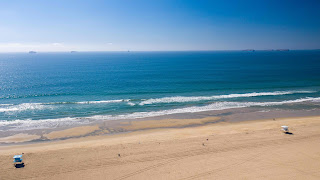There are even built-in effects that can be added to a clip to give the video a little bit of glitching between frames to make the video appear more like a genuine timelapse shot using photos. This effect is called “Posturize Time,” but what is covered here is simply a video sped up.
Utilizing some pre-existing footage, creating a timelapse in Premiere Pro using a .mp4 or .mov file is easier than it sounds. Before anything is done in Premiere, it’s important to consider which clip will be used. A video clip with a duration under 30-seconds isn’t going to give as great of a result as a clip one to five minutes long.
There are a few reasons for this, but the main reason is that the longer the clip available with smooth, continuous video, the more room to make adjustments in Premiere. For example, if the clip imported is 40-seconds long and there are 5-seconds at the beginning where the shot wasn’t quite set up yet and a 5-seconds at the end of the recording where the drone’s camera jerked up a little bit, that leaves 30-seconds remaining of usable content.
Now, there’s a 30-second clip in the timeline of cars passing by on the freeway and what’s needed is a ten-second clip. Creating the timelapse effect from video footage means increasing the clip’s speed thereby shortening the clip’s duration.
A 500% increase in video speed looks pretty good, but the clip is only 6-seconds long. 300% nails the needed clip duration at 10-seconds, but the timelapse effect isn’t the best. Instead of hundreds of cars flying by it is almost possible to follow one car during the shot.
For the purposes of this article a clip with a duration of 60-seconds will be used. If the clip is longer than that, say 1:20s, even better. Import that clip into Premiere then drag it to the timeline.
Right-click on the clip in the timeline and select “Speed/Duration…” When a small window appears the current speed and duration of the unmodified clip is shown and should look like this:
 |
| Shortening video clip length in Premiere |
Once in the timeline, pull in 10-seconds of each end of the clip to create the 60-second clip. The benefit of dragging the ends as opposed to trimming each side is, if the clip is getting dropped into another project, now there’s video available for smooth transitions.
 |
| Adjusting clip speed and duration in Premiere |
Click on “100%” and change it to “600%,” and the duration will automatically adjust itself to “00:00:10:00.”
Render the footage by selecting the clip and pressing “CMND + R” or if using a PC “CTRL + R.” Once rendered the preview of the sped-up clip will begin playing. The only thing left to do now is “File > Export > Media…” then choose the preferred output settings.
That’s it. A 60-second clip has been squished into a 10-second clip making the video appear like time is sped up.
 |
| The end result. 100% vs 600% |
Photo credits: Thomas Husen






